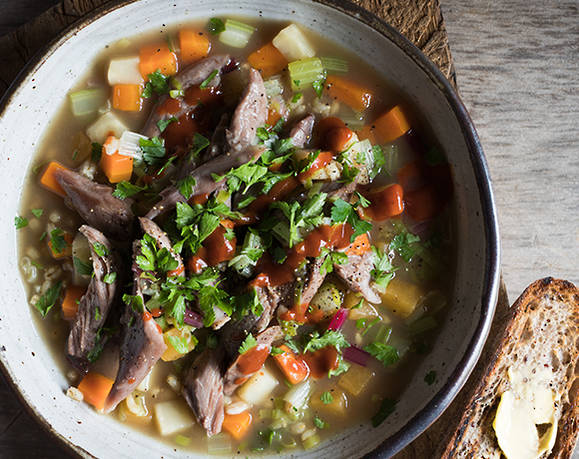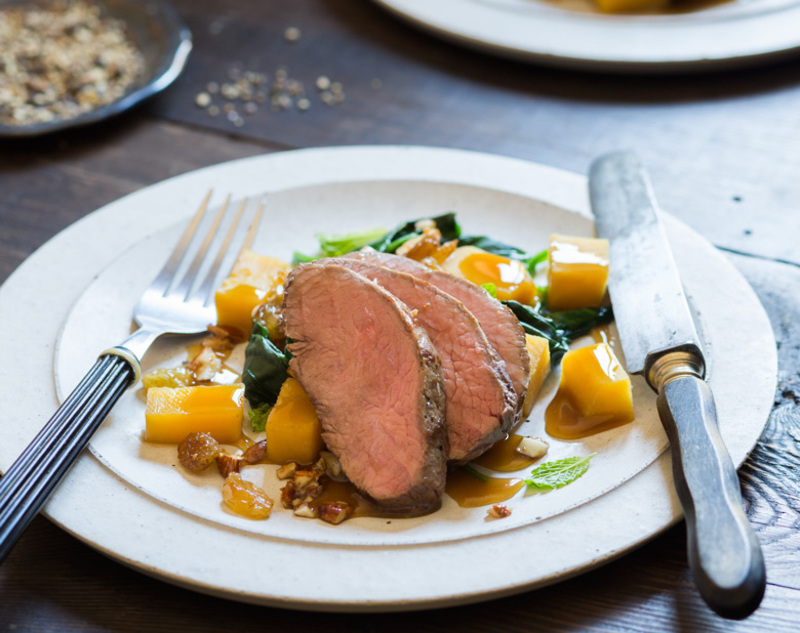WHY LAMB IS STILL ON THE PLATE – NZ NUTRITION PROFESSIONALS WEIGH IN
Grass-fed, free-range and locally sourced are just a few of the reasons why New Zealand nutritionists and dietitians recommend you to keep eating lamb..
Forget the list of trending foods for 2018; Kiwis have been eating New Zealand lamb for generations and according to a group of nutrition experts, it’s here to stay.
“Our access to grass-fed and hormone-free lamb should be celebrated in New Zealand,” says Associate Registered Nutritionist, Chantal Cuthers. “I have fond memories of hosting family events with lamb chops on the BBQ or roasted lamb for Christmas lunch.”
Popular cuts such as leg steaks or diced lamb are known for being rich in iron, vitamin B12, zinc and protein, but it’s the cheaper and less tender cuts we’re also being encouraged to eat.
Registered Nutritionist, Mikki Williden reiterates, “Slow-cooker cuts like neck chops are a good source of collagen; the longer you cook them, the more the gelatinous part is broken down where we find glycine and proline, two amino acids not found in many food sources, yet needed for optimal health.”
Bek Parry, Christchurch based Registered Nutritionist, agrees, “You can’t beat that soft, gelatinous meat that falls off the bone.”
New Zealand lamb is held in high regard worldwide and the country has become famous for our sheep, and the top-quality lamb we produce. As such, Kiwis perceive lamb as a premium meat, often reserving it for special occasion meals.
On average, the group of experts Beef + Lamb New Zealand spoke to will eat lamb a few times in a month. Registered Nutritionist, Nicola Jackson, remembers eating roast lamb quite regularly as a child, whenever she stayed with her best friend who lived on a sheep and beef farm.
“Now, we eat lamb once a fortnight in the summer, in winter maybe a little less,” says Jackson.
While lamb may not be considered a low-cost ingredient, there are ways to stretch a meal using lamb, and boost its nutrient profile at the same time. The group suggests adding lentils, beans, rice or frozen vegetables to an existing recipe to make your meat go further.
Auckland Registered Nutritionist, Amanda Brien, thinks lentils and lamb go particularly well together, especially in a Bolognese, lasagne or in burger patties.
“Legumes are a plant-based source of protein to complement the meat, providing dietary fibre and different vitamins and minerals,” she says.
And don’t shy away from using lamb mince, it’s a cheap, versatile cut that can be used in multiple recipes, such as burgers, koftas or burritos. Dietitian and New Zealand Nutrition Foundation CEO, Sarah Hanrahan, assures it’s also “well-liked by the kids so there’s no waste.”
Qualified Nutritionist, Danijela Unkovich, recommends using lamb mince in meatballs or a Bolognese sauce as she says, “it’s always a winner.”
Health professionals agree the best way for children to eat is by offering them the same healthy food choices that adults are eating – appropriately modified for their age. Children are more likely to eat what they have been given when they see their caregivers eating the same thing.
“Kids love doing anything we do, so eating together as a family is my top tip for introducing kids to eating lamb,” says dietitian Caroline Worth.
Another suggestion from Cuthers was making meatballs with children to develop their oral and hand motor skills. In addition, when introducing solids, she simply says to purée lamb with green vegetables.
New mum and Registered Nutritionist, Jess Fisk, suggests kids should play with their food to aid brain development, and says it means they’re more likely to eat it.
“Let them get grubby with a chop or lamb shank, mince patties, casseroles or cottage pie. To bump up the nutrients in any recipe, you can also add a little bit of finely sliced lamb liver* (lambs fry) for a good source of vitamin A, B12, selenium, zinc and copper.”
Check out the ingredients the New Zealand nutrition experts would enjoy with a leg of New Zealand lamb:
- Amanda Brien, Registered Nutritionist (Auckland): A range of vegetables to roast - potatoes, kumara, carrot, parsnip and onion, as well as rosemary and garlic to flavour the lamb and a bag of baby spinach for a simple salad on the side. The vitamin C in spinach also helps our bodies absorb iron. This would go down very well with my flatmates and hopefully there would be enough leftovers for tomorrow’s lunch. Anyone who knows me knows I’m all about leftovers to make lunch easy.
- Chantal Cuthers, Associate Registered Nutritionist (Auckland): Baby beetroot leaves, rocket, asparagus, blue cheese, herbs, garlic, and fresh figs to make a salad to serve alongside the lamb.
- Jess Fisk, Registered Nutritionist (Bay of Plenty): Potatoes, garlic, rosemary, peas and green beans.
- Sarah Hanrahan, Dietitian and CEO NZ Nutrition Foundation (Auckland): Spinach, garlic, flat breads, hummus, tomatoes and feta.
- Nicola Jackson, Registered Nutritionist (Manawatu): Mint sauce, potato, kumara and greens. You can't beat a traditional lamb roast for dinner.
- Bek Parry, Registered Nutritionist (Christchurch): Rosemary, garlic, potatoes, pumpkin, frozen peas, leeks, cabbage, mint and mint sauce and would make a gravy.
- Danijela Unkovich, Nutritionist (Auckland): Garlic, rosemary and olive oil to cook the lamb, root veggies and ingredients for a fresh garden salad. Oh, and a good quality mint sauce.
- Mikki Williden, Registered Nutritionist (Auckland): Rosemary, potatoes, parsnip, pumpkin and brussel sprouts.
- Caroline Worth, Dietitian (Auckland): Traditional roast vegetables – potatoes, yams, carrots, onions, with some sort of green – and maybe an addition like bok choy for something a bit different, and to embrace the multicultural society we have become. And of course, a good rich gravy and rosemary. I don’t like mint sauce but I am a fan of horseradish (even if that is traditionally served with beef), and I wouldn’t say no to a Yorkshire pudding either – it must be the English side of me coming through.
- While liver is an excellent source of nutrients, it is also high in vitamin A. Vitamin A is important for health, but too much can be harmful to babies. Limit liver to 3 teaspoons (15 grams) per week.
Check out some of Emily's (Beef + Lamb Nutrition Manager's) favourite lamb recipes below.




